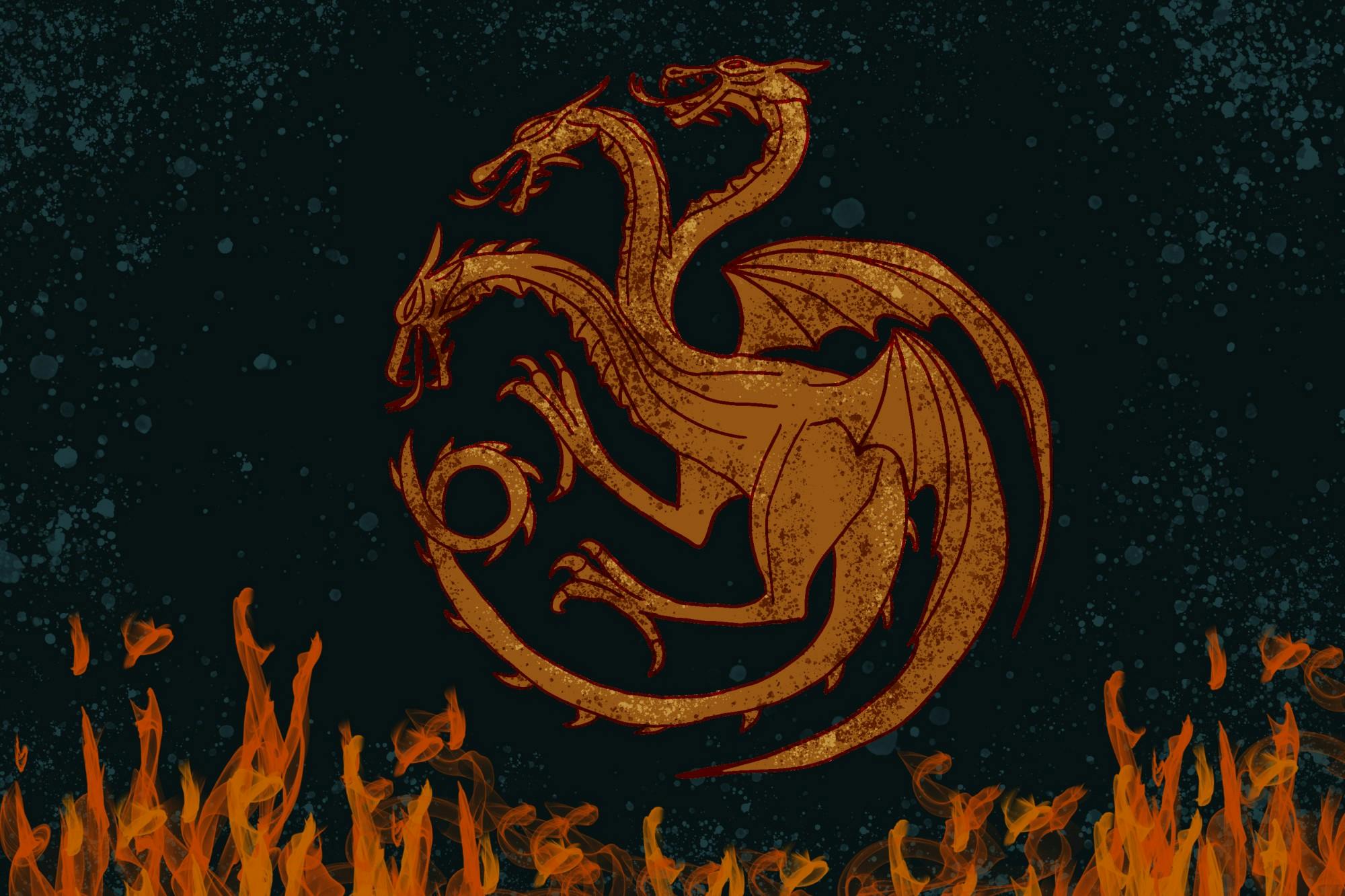As an avid “Game of Thrones” fan, I have been counting down the minutes to its highly anticipated prequel, “House of the Dragon,” since its announcement in 2019. Like many “Game of Thrones” fans, I was wildly disappointed by its unfulfilling finale that left me irrationally angry; a rushed ending that throws away about eight seasons of character development is no way to reward fans for their dedication. Even so, I was excited to restart my obsession with the “Game of Thrones” world — now with new characters, romances and drama.
“House of the Dragon” certainly delivered. It reinvigorated my love for Westeros, the world of “Game of Thrones,” and almost made me forgive the crimes committed by the writers in its final season. “House of the Dragon” offers beautiful cinematography and phenomenal acting, which allowed me to love even the most unredeemable of characters. However, the show falls short with a drawn-out plot that was simultaneously incredibly slow and strangely rushed with frequent time skips.
“House of the Dragon” was always going to be a guaranteed success: Any show that follows the beloved “Game of Thrones” is sure to be viewed, discussed and renewed. While watching “House of the Dragon,” it seemed clear that the show had little need to entice viewers with shock or outrageous scandal. By contrast, “Game of Thrones” was engaging because of its erratic plot and shocking twists; in episode one, there is incest, a Dothraki wedding and a dramatic instance of a child pushed out of a window. In the first episode of “House of the Dragon,” there is a death and a coronation — while exciting, not unexpected.
Many episodes of “Game of Thrones” were flawed, but the vast majority seized attention. Conversely, “House of the Dragon” played it safe with the plot, primarily setting up future seasons rather than critically engaging its audience. Within the hour-long episode, there would be approximately 45 minutes of setup and political discourse, followed by 15 minutes of epic conflict or scandal. While these 15 minutes rivaled the best of “Game of Thrones,” the large blocks of the episodes were often dull. The show spans 20 years — and inevitably, the frequent time jumps felt dizzying. Certain plots were overindulged while others were ignored — who was the Crab king anyway? The writers seemed to hide behind the notoriety of “Game of Thrones” without trying to elevate the show.
I do not intend to come across as bitter: I acknowledge that “House of the Dragon” was put in a difficult position. Unable to escape comparison to its predecessor, it’s unfair to pit an introductory season against a show that has won 59 Emmys. “House of the Dragon” has many victories: phenomenal casting, exquisite costuming and gorgeous CGI. But to achieve true success, the writers must adjust their pacing and take more risks.
The special effects of “House of the Dragon” elevate the already established world of Westeros, indulging in opulence and drama. For example, the momentous proportion of Vhagar the dragon dwarfs the actors while somehow looking eerily real. Fire creeps under the war table at Dragonstone as conflict nears, brilliantly setting a somber tone. Alicent Hightower declares her rebellion with a green dress in a sea of red and black, indicating fast approaching drama. I was in awe of the visual world of the show — and that did not stop at the cinematography.
Until I saw Milly Alcock, I had never experienced love at first sight. Playing young Rhanerya Targaeryen, Alcock set the tone for the main character of the show with a skill and poise that rivals the most veteran actors. She hooked my attention and won my alliance to her side in the upcoming Dance of the Dragons, a major civil war. Similarly, Emily Carey, who plays Young Alicent, introduced the complexity of her character through expertly portraying her evolution from naive girl to conniving manipulator. I felt heartbroken after a time skip when these characters suddenly aged, worried that the allure of these characters would be lost.
Boy, was I wrong.
Olivia Cooke, who portrayed Alicent Hightower, built upon the complexities established by Carey. Cooke embraced a seemingly-villainous character — and played her with such desperation and strength that I couldn’t help but sympathize with her plights as a young mother. Hightower has been controlled her whole life — a victim to the will of the men around her — and Cooke beautifully demonstrates this tragedy. Because of my intense love for Alcock, I was most nervous about Emma D’Arcy’s ascension to the role. That being said, they played Rhanerya Targaryen’s with a cool calculated attitude that emphasized the character’s struggles: her complicated role as a woman in a patriarchal society, the difficulties of being a reluctant ruler and the challenges of near constant loss. D’Arcy perfectly portrays the juxtaposition of Rhanerya’s sense of duty with the debilitating grief that has continually defined her life. I most appreciated the final scene of the show, when after Rhanerya hears tragic news they turn around and stare dead into the camera. The mirage of emotions in Rhanerya’s eyes — grief, anger, heartbreak — gave me chills as D’Arcy’s acting promises eventful future seasons.
Every actor seems to excel in their role: Paddy Considine, who playsViserys Targaryen, is the only redeemable character in the show who I consistently loved and Matt Smith, who portrays Daemon Targaryen, made me want to overlook murder and war crimes. While “House of the Dragon” had several successes, it is the phenomenal casting that truly characterizes this show. Each character feels carefully crafted to teach some lesson or prove some truth. It is because of the strength of these characters that I am positive “House of the Dragon”’ will succeed: After last Sunday’s insane finale, my countdown to season two has already begun.
Rating: ★★★★☆




